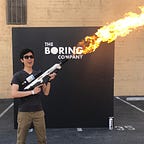3 Ways to Make Model 3 Even Quieter
EV drivers hate noise. Wind noise is air howling at you. And tire/road noise is an equally annoying hum.
How is wind noise and road noise is produced? I’ll explain both of these and then present solutions to reduce the noise. The goal is to make driving the Model 3 a more pleasant experience than it already is.
Wind Noise
Wind noise is caused by wind hitting the cars surfaces and catching in the panel gaps. This causes turbulent airflow. The more turbulent the air, the noisier it is.
One major source of wind noise are the gaps in the panoramic sunroof. This noise reduction kit¹ fills in the gaps with a rubber gasket. This lets the air flow smoothly over the gaps, thereby reducing wind noise.
The reduction in wind noise is noticeable, especially because the panoramic sunroof is right next to your head/ears.
It’s cheap, takes only 10 minutes to install, and from my testing with my car works really well.
Similarly, the gaps in the door panels cause a lot of wind noise because there are a lot of panel gaps (basically 3 gaps per door). This door seal kit¹ reduces wind noise caused by those gaps with rubber weather stripping.
Like the noise reduction kit¹, the door seal kit¹ is inexpensive. And it can be installed in about 30 minutes.
From LivingTesla experimenting, this door seal kit¹ should reduce noise by 2 to 4 dB at highway speeds.
As an added benefit, these seals also keep the door sills clean (dirt/mud kicked up by the front wheels can’t enter the door panel gaps).
Road Noise
The other source of noise is road noise.
Road noise is sound coming from the pavement, tires, electric motors, brakes, etc. The most significant of these is pavement and tire noise.
A lot of road noise leaks into the trunk space because it does not have much acoustic insulation. The top of the trunk is just bare metal and sound goes right through that. So sound flows from the outside of the car, easily into the trunk, and from there easily flows into the cabin.
This cotton trunk pad¹ solves this by covering all of the bare metal and provides sound insulation for the trunk. It installs in only 10 minutes.
This cotton front trunk (“frunk”) pad¹ also covers the bare metal and provides sound insulation for the front trunk. It also installs in only 10 minutes.
An added benefit is the temperature insulation that this also provides for items that you place in the front trunk.
Summary/TL;DR
Wind noise is created due to the gaps. These two fix that:
Road noise enters the cabin when not sufficiently insulated. Theses fixes that:
Further Reading?
If you enjoyed this article, consider checking out these articles going over other categories of accessories!
- Interior Accessories:
- Exterior Accessories
If you’ve never experienced a Model 3, check out the things I learned driving a Tesla Model 3 Performance:
Or see what my commute is like as a Silicon Valley Engineer with a Tesla Model 3:
If you’d like to get your very own Tesla, you can get 1,000 miles of FREE Supercharger miles if you use my referral link! https://ts.la/matthew18238
Footnotes
[1]: Disclosure: I may make a commission if you use this link.
